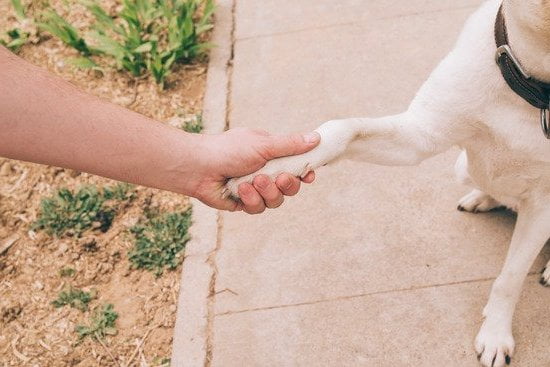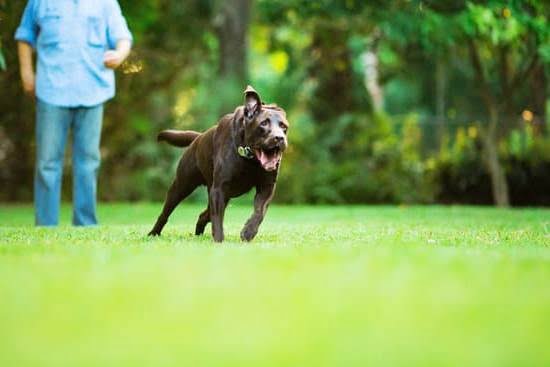Training a pitbull is different from training other breeds of dogs due to their unique training needs. Pitbulls have gained a reputation for being aggressive and dangerous, but this stereotype is often based on misconceptions and misinformation. In order to effectively train a pitbull, it is important to understand their behavior, address any challenges specific to the breed, and build a trusting relationship with them.
Pitbulls have a complex history that has contributed to their misunderstood nature. They were originally bred for blood sports such as bull-baiting and bear-baiting, which required them to possess a certain level of aggression. However, responsible breeders and dedicated owners have been working towards reshaping the image of pitbulls as loving and loyal companions. By shattering these stereotypes, we can approach training pitbulls with an open mind and focus on their individual needs.
Understanding pitbull behavior is crucial when it comes to training them. Early socialization is key in preventing aggression and fear-based behaviors. Exposing them to various environments, people, animals, and experiences helps them develop into well-adjusted adult dogs. Additionally, consistent training techniques using positive reinforcement are essential for teaching commands and good behavior. Building trust through rewards rather than punishment helps cultivate a strong bond between the owner and their pitbull.
The History and Misconceptions Surrounding Pitbulls
Pitbulls have long been associated with negative stereotypes and misconceptions. These misconceptions stem from a combination of breed history, media portrayal, and misinformation. In this section, we will explore the history of pitbulls and debunk some of the common myths surrounding these misunderstood dogs.
Firstly, it is important to understand the origins of pitbulls. Originally bred for bull-baiting and later dogfighting, pitbulls were selectively bred for their strength, agility, and loyalty. However, it is crucial to note that breed alone does not determine aggression or temperament. Like any other breed, a dog’s behavior is influenced by a variety of factors including genetics, environment, socialization, and training.
One of the biggest misconceptions about pitbulls is that they are inherently aggressive towards humans. This stereotype has led to unjust breed-specific legislation (BSL) in many places around the world. However, studies have shown that pitbulls actually score higher than average when it comes to temperament tests compared to other popular breeds such as Golden Retrievers and Border Collies.
To shatter these stereotypes and promote a more accurate understanding of pitbulls, responsible ownership practices should be emphasized. It is essential for owners to properly socialize their pitbull from an early age and expose them to various environments, people, and animals. Positive reinforcement techniques should be used during training sessions to foster trust and build a strong bond between the owner and their pet.
By educating ourselves about the history of pitbulls and challenging the misconceptions surrounding them, we can begin to change public perception. With responsible ownership practices such as early socialization and positive reinforcement training techniques, pitbulls can thrive as loving companions in our homes. It is time to shatter the stereotypes that unfairly stigmatize these remarkable dogs based solely on their breed.
Understanding Pitbull Behavior
Pitbulls are often misunderstood and have a reputation for being aggressive and dangerous dogs. However, like any other breed, their behavior is a result of genetics, upbringing, and training. Understanding the behavior of Pitbulls is crucial in order to effectively train and socialize them. This section will explore the importance of early socialization and training for Pitbulls.
The Role of Early Socialization
Early socialization plays a vital role in shaping the temperament of Pitbulls. Exposing them to various people, animals, and environments at a young age helps them become well-rounded and confident dogs. It’s important to introduce them to different sights, sounds, smells, and experiences in a positive and controlled manner.
During the critical socialization period (around 4-14 weeks), it is essential to expose Pitbull puppies to positive interactions with people, children, other dogs/pets, as well as different environments such as parks or public places. This will help prevent fear-based behaviors such as aggression or reactivity towards unfamiliar stimuli later in life.
The Benefits of Early Training
In addition to socialization, early training is crucial for Pitbulls. Starting basic obedience training from a young age helps establish clear communication between you and your dog. Teaching them commands like sit, stay, come can create a foundation for more advanced training down the road.
Training also provides mental stimulation for Pitbulls as they are intelligent dogs that thrive on mental challenges. By keeping their minds occupied through training exercises and problem-solving games, you can prevent destructive behaviors that may arise from boredom or frustration.
Overall, early socialization and training are key factors in molding the behavior of Pitbulls. By providing positive experiences with various stimuli at an early age while teaching basic commands and establishing boundaries through training sessions, you can set your Pitbull up for success in their lifelong journey of learning and obedience.
Training Techniques for Pitbulls
When it comes to training Pitbulls, utilizing positive reinforcement and consistency are key techniques that can help shape their behavior effectively. This section will explore these training methods in more detail, highlighting why they are particularly important for Pitbulls and how they can be implemented successfully.
Positive reinforcement is a training technique that involves rewarding desired behaviors to encourage their repetition. For Pitbulls, who are known for their strong will and determination, positive reinforcement helps to build a trusting and respectful relationship with their owners. By consistently rewarding good behavior with treats, praise, or playtime, Pitbulls will associate these rewards with their actions, reinforcing the desired behavior.
Consistency is also crucial when training Pitbulls. These dogs thrive on routine and structure, so it’s important to establish clear rules and expectations from the beginning. This means being consistent in commands, rewards, and consequences. Using the same cues for behaviors consistently will help the Pitbull understand what is expected of them and reduce confusion or frustration during the training process.
To implement positive reinforcement and consistency effectively during Pitbull training sessions, consider the following tips:
- Use high-value rewards: Find out what motivates your individual Pitbull-whether it’s treats, toys, or praise-and use those as rewards during training sessions.
- Break tasks into smaller steps: Just like any dog breed, big tasks can be overwhelming for Pitbulls. Breaking them down into smaller steps allows them to understand what is expected of them and builds confidence as they achieve each milestone.
- Be patient: Training takes time and persistence; remember not to get frustrated or lose patience with your Pitbull. Reinforce small successes along the way to keep both you and your dog motivated.
- Consider professional help if needed: If you encounter challenges beyond your expertise or need guidance specific to your Pitbull’s needs, seek assistance from a professional trainer who has experience working with this breed.
By utilizing positive reinforcement and consistency, Pitbull owners can establish a strong foundation for training their dogs. These techniques not only help shape desired behavior but also foster a trusting and respectful relationship with their Pitbulls. The next section will delve into the specific challenges that pet owners may face when training Pitbulls, including addressing aggression and leash reactivity.
Pitbull-Specific Training Challenges
Understanding Aggression in Pitbulls
One of the challenges that pitbull owners may face during training is addressing aggression. It is important to note that aggression in pitbulls is not inherent, but rather a result of factors such as poor breeding, lack of socialization, or improper handling. However, it is crucial to address and manage this behavior to ensure the safety of both the dog and those around them.
To address aggression in pitbulls, it is essential to work with a professional dog trainer who has experience in handling and rehabilitating dogs with aggressive behavior. A qualified trainer will be able to assess the underlying causes of aggression and develop a customized training plan tailored to your pitbull’s needs.
Dealing with Leash Reactivity
Leash reactivity can be another common challenge for pitbull owners during training. Leash reactive behavior refers to aggressive or reactive responses exhibited by a dog when on a leash, typically towards other dogs or strangers. This behavior can stem from fear, frustration, or lack of proper socialization.
To address leash reactivity in pitbulls, it is important first to teach your dog basic obedience commands such as sit, stay, and leave it. These commands will help redirect their focus away from triggers that may cause reactive behavior. Gradual desensitization and counter-conditioning techniques are also effective methods in helping your pitbull learn how to remain calm and composed while on a leash.
Seeking Professional Help
If you are struggling with managing aggression or leash reactivity in your pitbull despite consistent training efforts, it may be beneficial to seek the help of a professional dog trainer or behaviorist who specializes in working with these specific issues. They will have the knowledge and experience necessary to assess your dog’s behavior accurately and provide guidance on effective strategies for modification.
Remember that addressing these challenges requires patience, consistency, and a commitment to providing your pitbull with the training and support they need. With the right approach and proper training techniques, you can help your pitbull overcome aggression and leash reactivity, promoting a well-adjusted and obedient companion.
The Importance of Exercise and Mental Stimulation for Pitbulls
Pitbulls are known for their high energy levels and athleticism. To ensure a well-rounded and obedient pitbull, it is essential to provide them with regular exercise and mental stimulation. This section will explore the importance of exercise and mental stimulation for pitbulls, as well as strategies for channeling their energy effectively.
Regular exercise is crucial for pitbulls due to their active nature. Pitbulls have a lot of stamina and require daily physical activity to prevent boredom and destructive behaviors. Engaging in activities such as long walks, jogging, playing fetch, or participating in agility training can help burn off excess energy and keep your pitbull mentally and physically stimulated.
Alongside physical exercise, providing mental stimulation is equally important for pitbulls. These intelligent dogs thrive when given challenging tasks that engage their minds. Mental stimulation can be achieved through puzzle toys, treat-dispensing toys, obedience training sessions, or scent work games. Regularly introducing new experiences or environments can also stimulate their senses and keep them engaged.
When providing exercise and mental stimulation for your pitbull, it is essential to tailor these activities to their individual needs. Different dogs have varying energy levels and preferences when it comes to activities. It’s important to monitor your pitbull’s behavior during exercise and adjust accordingly to avoid overexertion or boredom.
Moreover, incorporating training exercises into your pitbull’s routine not only provides mental stimulation but also strengthens the bond between you and your dog. Training sessions can improve obedience skills while also teaching your pitbull impulse control and focus. Consistency in training is key – short but frequent training sessions are more effective than long occasional sessions.
In summary, regular exercise and mental stimulation play a vital role in the overall well-being of pitbulls. Through physical activities such as walks or playtime, as well as mental challenges like puzzle toys or obedience training sessions, you can help channel your pitbull’s energy in productive and beneficial ways. By providing these outlets, you can help prevent behavioral issues and reinforce a strong bond with your pitbull.
Pitbull Training
Building a trusting and respectful relationship with your Pitbull is crucial for their training success. This section will explore the important aspects of developing a strong bond with your Pitbull and how it can positively impact their behavior and obedience.
One of the key elements in building trust and respect with your Pitbull is establishing yourself as a confident and consistent leader. Dogs, including Pitbulls, thrive when they have clear boundaries and rules to follow. It is essential to set these boundaries from the beginning and consistently enforce them in a fair and firm manner. This consistency will help your Pitbull understand what is expected of them and feel secure within their training.
In addition to setting boundaries, positive reinforcement plays a vital role in building trust with your Pitbull. Positive reinforcement involves rewarding desirable behaviors with treats, praise, or playtime. By using positive reinforcement techniques, you can motivate your Pitbull to repeat those behaviors that you want to see more of. This creates a positive association between good behavior and rewards, strengthening the bond between you and your dog.
| Aspect | Explanation |
|---|---|
| Setting Clear Boundaries | Establishing yourself as a confident leader by setting rules and consistently enforcing them. |
| Positive Reinforcement | Rewarding desirable behaviors with treats, praise, or playtime to strengthen the bond. |
Furthermore, spending quality time with your Pitbull outside of training sessions is essential for building trust. Engaging in activities such as daily walks, playtime, or interactive toys can help channel their energy while reinforcing their bond with you. This additional bonding time allows you to better understand your dog’s behavior patterns, strengths, and areas for improvement.
Overall, building a trusting and respectful relationship with your Pitbull lays the foundation for successful training. By establishing clear boundaries, using positive reinforcement, and spending quality time together, you can create a strong bond that will enhance both the effectiveness of their training and the overall obedience of your Pitbull.
Pitbull Training vs. Dog Training
When it comes to training, many people wonder if there are specific differences between training a pitbull compared to other dog breeds. While pitbulls do have some unique training needs, there are also many similarities in the basic principles of dog training that apply to all breeds. Understanding these key differences and similarities can ultimately lead to a successful training journey with your pitbull.
One important distinction when it comes to pitbull training is the need for early socialization. Like any dog, pitbulls benefit greatly from being exposed to various people, animals, and environments at a young age. However, due to their sensitive nature and potential for aggression if not properly trained and socialized, it becomes even more crucial for pitbulls. This means introducing them to positive experiences as early as possible and continuing regular socialization throughout their lives.
Positive reinforcement is another technique that is effective for all breeds, including pitbulls. This involves rewarding desired behaviors with treats, praise, or playtime, while ignoring or redirecting unwanted behaviors. Consistency is key when using positive reinforcement, as pitbulls are intelligent dogs that respond well to consistent cues and routines.
However, one aspect of pitbull training that may pose unique challenges is addressing aggression and leash reactivity. Pitbulls can have a predisposition towards certain aggressive tendencies if not properly trained and managed. It is essential for owners of pitbulls to understand their breed’s behavior and work with professional trainers who specialize in dealing with these issues.
Overcoming Breed-Specific Legislation and Discrimination
One of the biggest challenges that pitbull owners face is breed-specific legislation (BSL) and discrimination. BSL refers to laws or regulations that restrict or ban certain breeds, often targeting pitbulls and other perceived “dangerous” breeds. These laws are based on misconceptions and stereotypes surrounding these dogs, which can lead to unfair treatment and restrictions for responsible pitbull owners.
Advocating for pitbulls begins with educating others about the breed and dispelling common myths. Many people believe that all pitbulls are inherently aggressive or dangerous, which is simply not true. Like any other dog breed, the behavior of a pitbull is primarily shaped by its environment and upbringing. By raising awareness about this fact, we can help change public perception and challenge the discriminatory laws that target these loving dogs.
Responsible ownership is another crucial aspect of advocating for pitbulls. This means ensuring that you are knowledgeable about the breed’s specific needs, providing proper training, socialization, exercise, and mental stimulation. It also involves being a responsible pet parent by spaying/neutering your pitbull, keeping them properly restrained or contained when necessary, and abiding by local laws regarding dog ownership.
To advocate for pitbulls against BSL and discrimination, it’s important to join forces with local organizations or national groups dedicated to promoting responsible ownership and fighting breed-specific legislation. These groups often provide resources such as information on how to effectively communicate with legislators or advocate for changes in existing laws. Sharing your own positive experiences as a pitbull owner can also be impactful in challenging stereotypes and dispelling misinformation.
By advocating for pitbulls and responsible ownership, we can work towards creating a more inclusive society where all dog breeds are judged based on their individual behavior rather than broad generalizations. Through education, awareness-raising campaigns, and responsible pet ownership, we can help create a future where pitbulls are not unfairly targeted but respected and loved as the wonderful companions they are.
Conclusion
In conclusion, training a Pitbull requires a unique approach that takes into account their history, behavior, and specific challenges. By understanding the misconceptions surrounding Pitbulls and shattering stereotypes, owners can approach training with an open mind and set their dogs up for success. Early socialization and consistent positive reinforcement techniques are key to shaping a well-behaved Pitbull.
While all dogs require exercise and mental stimulation, it is especially important for Pitbulls due to their high energy levels. By providing outlets for their energy through regular exercise and engaging activities, owners can help channel their dog’s energy in a positive way while also preventing destructive behaviors.
Building a trusting and respectful relationship with your Pitbull is crucial in the training process. This involves establishing clear boundaries, setting expectations, and providing your dog with plenty of love and affection. Through trust and respect, you can forge a lifelong bond with your Pitbull based on obedience and mutual understanding.
It is important to note that training a Pitbull is not without its challenges. Addressing aggression and leash reactivity requires patience, consistency, and potentially seeking professional help when needed. However, with proper training techniques and responsible ownership practices, these challenges can be overcome.
Finally, overcoming breed-specific legislation and discrimination is an ongoing battle that advocates for Pitbulls face. It is essential for owners to be responsible ambassadors for their breed by promoting understanding, educating others about the true nature of Pitbulls, and practicing responsible ownership at all times.
Frequently Asked Questions
Is training a pitbull different?
Training a pitbull can be slightly different compared to training other dogs, but it ultimately depends on the individual dog and their temperament. Pitbulls are known for their intelligence, strength, and high energy levels, which means they require consistent training and mental stimulation.
Due to their potential for being strong-willed or stubborn at times, it’s important to use positive reinforcement techniques to motivate them rather than resorting to harsh methods. Additionally, socialization is crucial for pitbulls to ensure they interact well with people and other animals.
Do pit bulls need special training?
Pit bulls do not necessarily need special training compared to other breeds, but they do require owners who are dedicated and committed to providing them with proper training and guidance. Like any dog, pitbulls benefit from obedience training, basic commands, leash manners, house-training, and crate-training.
It’s important to establish clear rules and boundaries from an early age so that these dogs understand what behavior is expected of them. Consistency in training techniques is important for pitbulls as they thrive when given structure and routine.
Are pitbulls easier to train?
While each dog is unique in terms of trainability, some pitbulls can indeed be easier to train due to their high intelligence and eagerness to please their owners. Many pitbulls are highly motivated by praise, treats, or playtime rewards during training sessions.
Nevertheless, it’s crucial to keep in mind that every individual dog will differ in terms of learning speed and personality traits that may impact how easy or challenging they are to train. Consistency, patience, positive reinforcement methods, and understanding the specific needs of your pitbull will greatly contribute towards successful training outcomes.

Welcome to the blog! I am a professional dog trainer and have been working with dogs for many years. In this blog, I will be discussing various topics related to dog training, including tips, tricks, and advice. I hope you find this information helpful and informative. Thanks for reading!





